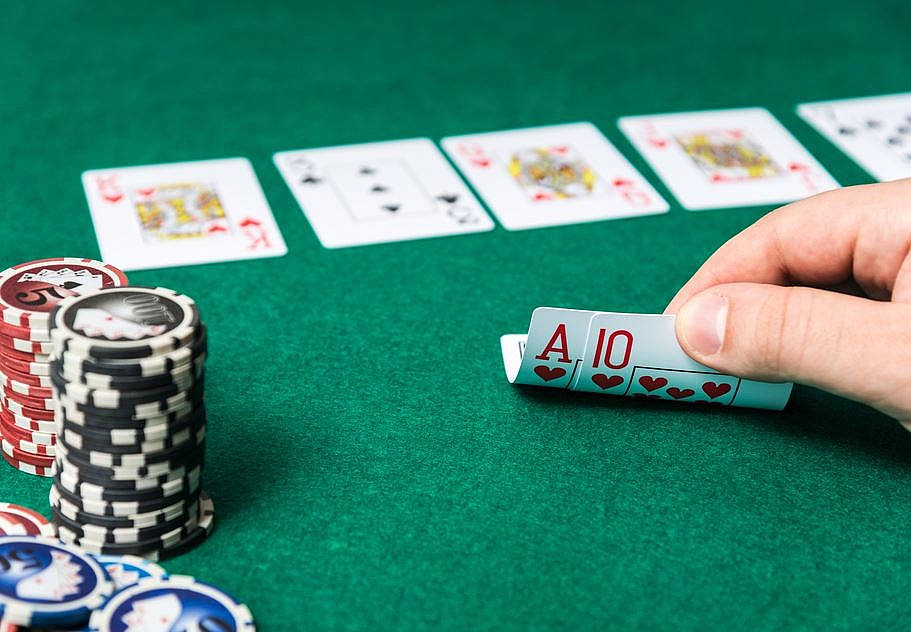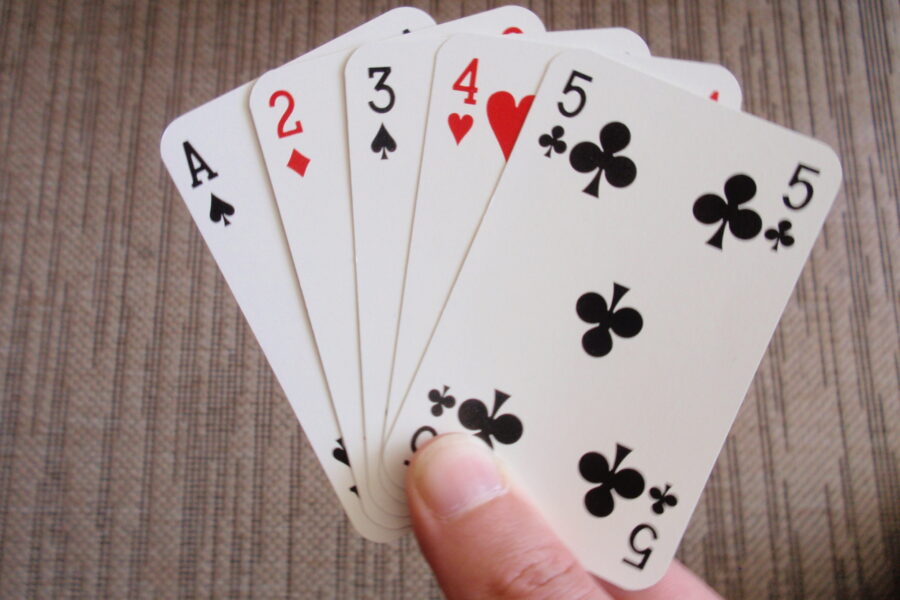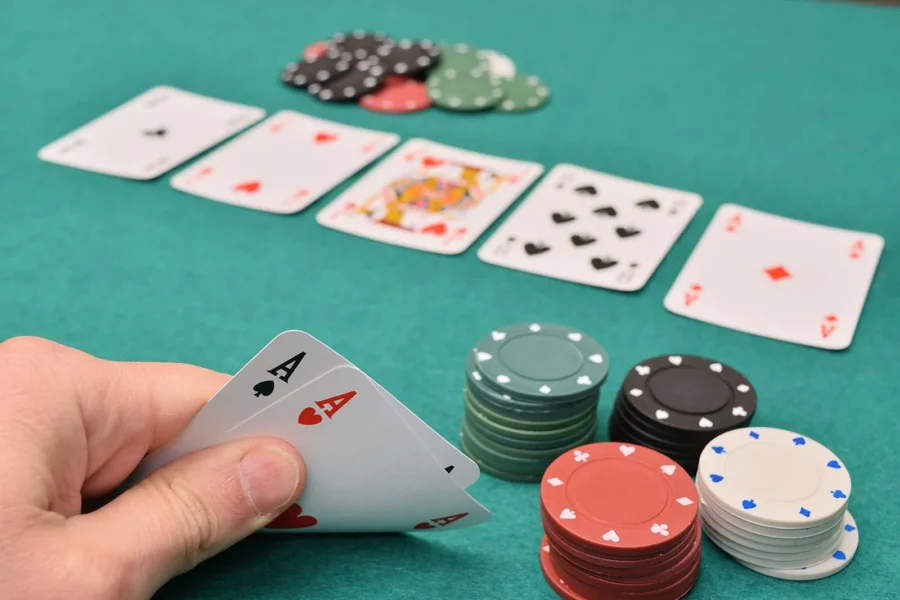What are the Poker Playing Styles?
Poker is one of the most exciting and strategic card games in the world, attracting both amateurs and professionals. In this article, you’ll learn why poker enjoys enduring popularity and why understanding different playing styles is crucial for achieving success at the poker table. You’ll also learn how to recognize and utilize various playing styles to increase your chances of winning. By understanding the importance of adapting your play to the situation and developing your poker strategy, you’ll become a more versatile and effective player.
Discover the secrets of the game, find out which playing styles best suit your personality, and start winning more at the poker table!
Aggressive Style (Aggressive Style)
The aggressive style of poker, also known as “aggressive style,” involves frequent raising and bluffing to put pressure on opponents. This style can be very effective but also carries certain risks.
An aggressive playing style involves actively participating in the game through frequent raising and re-raising, even with hands that are not necessarily the strongest. Players using this style try to dominate the table, forcing opponents into difficult decisions and often making them fold.
Characteristics of an Aggressive Style
- Frequent Raising: Aggressive players raise the stakes to increase the pot and pressure others. Raising with marginal hands is a common strategy to eliminate opponents from the hand.
- Bluffing: Bluffing is a key element of aggressive play. Players often pretend to have stronger hands than they actually do to force others to fold.
- High Bets: Aggressive players often place high bets to build large pots. High bets increase risk but also potential rewards.
- Table Domination: By constantly raising and making aggressive plays, players try to take control of the table, forcing others into a defensive game.
Advantages and Disadvantages of an Aggressive Style
Advantages
- Pressure on Opponents: The aggressive style forces opponents to make difficult decisions. Those who are unsure of their cards often fold, allowing the aggressive player to win the pot without showing their cards.
- Winning Without Strong Hands: Effective bluffing allows aggressive players to win even without the best cards.
- Building Large Pots: Frequent raising and high bets increase the pot size, meaning potential winnings are larger.
Disadvantages
- Risk of Large Losses: Aggressive play involves high risk. Raising with marginal hands can lead to significant losses, especially when opponents have strong hands.
- Predictability: Regular opponents can eventually recognize the aggressive style and adjust their strategy to exploit its weaknesses.
- High Bluffing Costs: Bluffing is expensive. If opponents start calling bluffs, the aggressive player can quickly lose a significant portion of their stack.
Situational Examples
An aggressive style can be particularly effective in the following situations:
- Playing Against Passive Opponents: If there are many passive players at the table, aggressive raising can force them to fold frequently, allowing you to win pots without showing your cards.
- Short-Stacked Tournaments: In tournaments with a low stack, aggressive play can help quickly build a stack by putting pressure on opponents who do not want to risk elimination.
- Early Position Play: Raising from early positions can scare off players in later positions, allowing you to take control of the hand.
The aggressive style of poker is a high-risk, high-reward approach. Frequent raising, bluffing, and high bets allow players to pressure opponents and build large pots. However, to effectively use an aggressive style, it is essential to understand its advantages and disadvantages and to be able to adjust your strategy depending on the situation at the table. Mastering the aggressive style can significantly increase your chances of success in poker.
Tight Style (Tight Style)
The tight style of play, known as “tight style,” is an approach characterized by playing only the best starting hands and avoiding risky situations. We will take a closer look at what characterizes the tight style of play, its advantages and disadvantages, and in which situations it can be most effective. We will also discuss how players can use this style to increase their chances of success at the poker table.
The tight style of play involves selectively playing only the best starting hands and avoiding getting involved in hands with marginal hands. Tight players are patient and wait for strong cards to enter the game. This style focuses on minimizing risk and maximizing potential profits through safe and controlled play.
Characteristics of a Tight Style
- Playing Only the Best Starting Hands: Tight players wait for strong hands such as high pairs (AA, KK, QQ) and strong combinations like AK, AQ before deciding to play. They avoid playing marginal hands that can lead to uncertain situations after the flop.
- Cautious Betting Approach: Tight players are cautious when making decisions about raising and calling. They try to avoid situations where they have to take significant risks without adequate certainty about the strength of their hand.
- Risk Minimization: Tight players minimize risk by avoiding getting involved in hands with low EV (expected value). They focus on preserving their stack and gradually building it by winning smaller but more certain pots.
- Defensive Strategy: Tight players often adopt a defensive stance, calling only when they are confident about the strength of their hand. They avoid bluffing and rarely raise without a strong hand.
Advantages and Disadvantages of a Tight Style
Advantages
- Lower Risk of Losses: Tight players minimize the risk of large losses by avoiding playing with marginal hands. They focus on playing with strong hands, which increases their chances of winning.
- Solid Foundation for Beginners: The tight style is ideal for beginners learning the basics of poker. It allows them to learn the rules of the game and strategy without exposing themselves to significant risk.
- Predictable Profits: By playing with strong hands, tight players can expect more predictable profits. They avoid large fluctuations in their stack, providing greater stability.
- Better Emotional Control: Playing tight helps control emotions as players are less often involved in stressful and risky situations, allowing for a more balanced game.
Disadvantages
- Fewer Won Pots: Tight players may miss many opportunities to win pots by avoiding playing with marginal hands. Their cautious approach may lead to fewer wins over time.
- Predictability: Experienced opponents can easily recognize the tight style and adjust their strategy. They may bluff and raise more often, knowing the tight player will only play with strong hands.
- Limited Bluffing Opportunities: Tight players rarely bluff, which can limit their ability to win pots without showing their cards. The lack of bluffing can be exploited by more aggressive opponents.
Situational Examples
The tight style of play can be particularly effective in the following situations:
- Playing Against Aggressive Opponents: Playing tight against aggressive opponents can be beneficial, as it allows you to avoid risky situations. Tight players wait for strong hands to respond to aggressive opponents’ plays.
- Large-Field Tournaments: In large-field tournaments, the tight style can help survive the early stages and reach the later stages of the tournament. The cautious approach avoids unnecessary risk in early hands.
- Limit Poker Games: In limit games, where bets are fixed, the tight style can be more effective as players can control the pot size and avoid large losses.
The tight style of play in poker is an approach that focuses on playing only the best starting hands and minimizing risk. While this style has its disadvantages, such as fewer won pots and predictability, it is ideal for beginners and situations where a cautious approach is crucial. The tight style allows for more stable play, better emotional control, and risk minimization, leading to long-term success at the poker table. Mastering this style is a foundation for developing more advanced poker strategies.
Loose Style (Loose Style)
The loose style of play, known as “loose style,” is characterized by playing a wide range of starting hands and frequently participating in hands. This style is used by both amateurs and professionals who can utilize its potential to maximize winnings.
The loose style of play involves playing a larger number of starting hands compared to more conservative styles like the tight style. Loose players often enter hands with cards that other players might consider too weak. Loose play increases engagement in hands and allows for a more dynamic and unpredictable game.
Characteristics of a Loose Style
- Playing a Wide Range of Starting Hands: Loose players enter the game with many different hands, including medium and low-value cards. This approach allows them to frequently participate in hands.
- Frequent Calling and Raising: Loose players often call and raise even if their hand is not the strongest. This allows them to put pressure on opponents and increase the pot.
- Unpredictability: By playing a wide range of hands, loose players are harder for opponents to read. They can bluff or play strong hands in a way that makes it difficult to predict their strategy.
- Active Play: Loose players engage in many hands, making them active at the table and constantly changing the dynamics of the game.
Advantages and Disadvantages of a Loose Style
Advantages
- Difficulty in Reading: The loose style makes players unpredictable. Opponents have difficulty reading their hands, giving a strategic advantage.
- Greater Chances of Winning Large Pots: Playing a wide range of hands, loose players have more opportunities to complete combinations that can win large pots.
- Utilizing Bluffs: Loose players often bluff, which can lead to winning pots without showing strong cards. Their unpredictability increases the effectiveness of bluffing.
- Dynamic Play: An active style introduces dynamism and forces opponents to adjust, leading to mistakes on their part.
Disadvantages
- High Risk of Large Losses: Playing a wide range of hands, loose players expose themselves to greater risk. They can lose large amounts of chips, especially when opponents have strong hands.
- High Cost of Participation in Hands: Frequent calling and raising involve high costs. Loose players must be ready for significant fluctuations in their stack.
- Requires Advanced Skills: To play the loose style effectively, advanced poker skills are needed. Players must be able to read opponents well and make quick, accurate decisions.
- Predictable Bluffs: If opponents identify the loose style, they may start calling bets more often, limiting the effectiveness of bluffs and increasing the risk of losses.
Situational Examples
The loose style of play can be particularly effective in the following situations:
- Playing Against Passive Opponents: The loose style is effective against passive players who rarely raise and often fold. Loose players can put pressure on them and force them to fold.
- Early Stages of a Tournament: In the early stages of poker tournaments, when blinds are low, the loose style allows for building a stack by frequently participating in hands and winning small but numerous pots.
- Low-Stakes Games: In low-stakes games where opponents may be less experienced, the loose style can lead to more frequent mistakes on their part, which can be exploited to win larger pots.
The loose style of poker is a dynamic and unpredictable approach that involves playing a wide range of starting hands and frequently participating in hands. Although it carries high risk, it also offers significant opportunities for winning large pots and difficulty for opponents to read. To effectively use the loose style, players must have advanced poker skills and be ready for dynamic changes at the table. Mastering this style can significantly increase the chances of success and bring great satisfaction from the game.
Tight-Aggressive Style (TAG)
The tight-aggressive style, known as “Tight-Aggressive” (TAG), is one of the most effective and popular playing styles in poker. It combines a selective approach to choosing starting hands with aggressive betting to maximize profits while minimizing risk.
The tight-aggressive style involves playing a limited number of starting hands but with high aggression. TAG players are very selective in choosing hands they enter the game with, but once they decide to participate, they play very aggressively, often raising and re-raising to pressure opponents and build large pots.
Characteristics of the Tight-Aggressive Style
- Selective Choice of Starting Hands: TAG players only play the best starting hands, such as high pairs (AA, KK, QQ), strong combinations (AK, AQ), and high-potential hands (suited connectors). They avoid playing marginal hands, minimizing the risk of losses.
- Aggressive Betting: When TAG players decide to play, they do so with high aggression. They often raise and re-raise to build pots and force opponents into difficult decisions.
- Pot Control: With a selective approach to starting hands and aggressive play, TAG players control the pot size. They raise to maximize profits when they have strong hands and minimize losses when they encounter resistance.
- Position Utilization: TAG players effectively use their position at the table. They often raise from late positions to pressure opponents and take advantage of informational superiority.
Advantages and Disadvantages of the Tight-Aggressive Style
Advantages
- Efficiency in Winning Large Pots: By playing selectively and aggressively, TAG players often win large pots, maximizing their profits. Strong starting hands and aggressive bets force opponents to make difficult decisions.
- Risk Minimization: The selective approach to choosing starting hands minimizes the risk of losses. TAG players avoid playing with marginal hands, reducing the number of uncertain situations after the flop.
- Difficulty in Reading: Aggressive play and selectivity make TAG players difficult to read. Opponents have trouble predicting when a TAG player is bluffing and when they have a strong hand.
- Control of Game Pace: TAG players often control the pace of the game at the table. Aggressive bets force opponents into a defensive game, reacting to their actions.
Disadvantages
- Predictability: If TAG players are too predictable in their choice of starting hands and aggressive play, experienced opponents can adjust their strategy and exploit their predictability.
- High Costs of Mistakes: Aggressive play involves high costs of mistakes. If a TAG player misjudges the situation and encounters a strong hand, they can quickly lose a large portion of their stack.
- Requires Advanced Skills: The TAG style requires advanced poker skills, including the ability to read opponents, control the pot, and make quick, accurate decisions.
Situational Examples
The tight-aggressive style can be particularly effective in the following situations:
- Playing Against Loose Opponents: The TAG style is effective against loose players who often enter hands with marginal hands. Aggressive raising forces them into difficult decisions and often leads to winning pots without showing cards.
- Short-Stacked Tournaments: In tournaments with small stacks, the TAG style allows for quickly building a stack by pressuring opponents and forcing them to fold.
- Cash Games: In cash games, the TAG style allows for stable profit-building through a selective approach to starting hands and aggressive play, minimizing risk and maximizing profits.
The tight-aggressive (TAG) style is one of the most effective and popular playing styles in poker. It combines selectivity in choosing starting hands with aggressive betting to maximize profits while minimizing risk. Although this style requires advanced poker skills and can be predictable, it offers significant opportunities for winning large pots and controlling the pace of the game. Mastering the TAG style can significantly increase your chances of success and bring great satisfaction from the game.
Loose-Aggressive Style (LAG)
The loose-aggressive style, known as “Loose-Aggressive” (LAG), is an approach to poker that combines playing a wide range of starting hands with aggressive betting. It is one of the most dynamic and challenging styles to master, capable of bringing significant profits but also associated with high risk.
The loose-aggressive style involves playing a wide range of starting hands and frequently raising and re-raising to pressure opponents. LAG players are active at the table, engaging in many hands and constantly changing the dynamics of the game. This style requires advanced poker skills, including the ability to read opponents, control the pot, and make quick, accurate decisions.
Characteristics of the Loose-Aggressive Style
- Playing a Wide Range of Starting Hands: LAG players enter the game with many different hands, including medium and low-value cards. Their strategy is based on frequent participation in hands, making them unpredictable.
- Aggressive Betting: Loose-aggressive players often raise and re-raise to build pots and pressure opponents. Aggressive play forces opponents into difficult decisions and often leads to winning pots without showing cards.
- Bluffing: Bluffing is a key element of the LAG style. Loose-aggressive players often pretend to have stronger hands than they actually do to force opponents to fold.
- Pot Control: LAG players aim to control the pot size through aggressive betting and raising. Their goal is to maximize profits when they have strong hands and minimize losses by forcing opponents to fold.
- Position Utilization: Loose-aggressive players effectively use their position at the table. They often raise from late positions to pressure opponents and take advantage of informational superiority.
Advantages and Disadvantages of the Loose-Aggressive Style
Advantages
- Difficulty in Reading: The LAG style makes players unpredictable. Opponents have difficulty reading their hands and predicting their strategy, giving a strategic advantage.
- Greater Chances of Winning Large Pots: By playing a wide range of hands and aggressively raising, LAG players have more opportunities to complete combinations that can win large pots.
- Utilizing Bluffs: The LAG style increases the effectiveness of bluffing because opponents often are not sure of the LAG player’s hand strength.
- Dynamic Play: An active style introduces dynamism and forces opponents to adjust, leading to mistakes on their part.
Disadvantages
- High Risk of Large Losses: Playing a wide range of hands, LAG players expose themselves to greater risk. They can lose large amounts of chips, especially when opponents have strong hands.
- High Cost of Participation in Hands: Frequent calling and raising involve high costs. LAG players must be ready for significant fluctuations in their stack.
- Requires Advanced Skills: To play the LAG style effectively, advanced poker skills are needed. Players must be able to read opponents well and make quick, accurate decisions.
- Predictable Bluffs: If opponents identify the loose style, they may start calling bets more often, limiting the effectiveness of bluffs and increasing the risk of losses.
Situational Examples
The loose-aggressive style can be particularly effective in the following situations:
- Playing Against Passive Opponents: The LAG style is effective against passive players who rarely raise and often fold. Loose-aggressive players can put pressure on them and force them to fold.
- Early Stages of a Tournament: In the early stages of poker tournaments, when blinds are low, the LAG style allows for building a stack by frequently participating in hands and winning small but numerous pots.
- Low-Stakes Games: In low-stakes games where opponents may be less experienced, the LAG style can lead to more frequent mistakes on their part, which can be exploited to win larger pots.
The loose-aggressive (LAG) style is a dynamic and unpredictable approach to poker that combines playing a wide range of starting hands with aggressive betting. Although it carries high risk, it also offers significant opportunities for winning large pots and difficulty for opponents to read. To effectively use the LAG style, players must have advanced poker skills and be ready for dynamic changes at the table. Mastering this style can significantly increase the chances of success and bring great satisfaction from the game. The LAG style is ideal for those who enjoy active and dynamic play and can effectively manage risk.







Leave a Comment